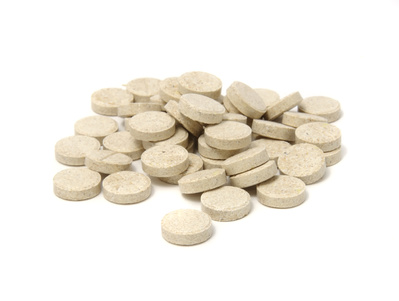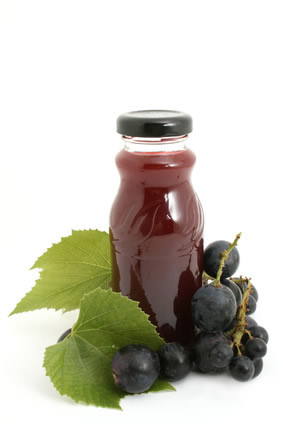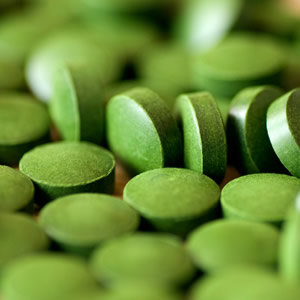The blueberry is native to North America. Range in size and color and are often sweet tangy or tart. The color of blueberries, from deep blue to purple, is caused by a group of flavonoids known as anthocyanins, which have important antioxidant power. Blueberries contain high amounts of polyphenols than many other fruits. The antioxidants like vitamin A, vitamin B complex, vitamin C, vitamin E, anthocyanin, selenium, iron, and zinc contain in blueberries help boost the body’s immune system so enable the body to fight against bacterial and viral infections.
Blueberries Fruit Medicinal Benefits
Blueberries (Vaccinium corymbosum) are among the edible fruits that are recognized best for their possible medical benefits.Various researches has shown that diets rich in phenolic compounds may be associated with lower risks of several chronic diseases including cancer. Laboratory experiments suggest that anthocyanins may help to prevent degenerative diseases, including heart disease, cancer, stroke and memory loss.
Antioxidant
Compounds in blueberries called polyphenols, specifically the anthocyanins that give the fruit its blue hue, are the major contributors to antioxidant effect. The ORAC value of 100 gram fresh blueberries is 5562 TE. Several research demonstrates that blueberry consumption boosts serum antioxidant status in humans. Elevated antioxidant amounts in the body may protect against damage to cells and cellular components, thus helping to reduce the risk of many chronic degenerative diseases.
Heart Health
Cardiovascular disease is caused by disorders of the heart and blood vessels, and includes coronary heart disease, cerebrovascular disease, raised blood pressure, peripheral artery disease, congenital heart disease and heart failure. Epidemiological studies suggest that increased consumption of anthocyanins lowers the risk of cardiovascular disease, the most common cause of mortality among human. Phytochemicals are compounds found in various herbs, and show that eating fruits like blueberries that are rich in phytochemicals may help to lessen a buildup of plaque along the blood-vessel walls. Hardening of the arteries (Atherosclerosis ) is a leading cause of heart disease. According to a study, which was reported in 2004 in the Journal of Biomedicine and Biotechnology, anthocyanins preserve cardiovascular system from oxidative stress and prevent the degradation of fat into harmful compounds in your blood. Research at the “University of Maine” showed that animals fed blueberry had improved blood pressure and reduced accumulation of fat in their arteries.
Hypertension
High blood pressure enhances risk of heart disease. Almost one-quarter of all adults worldwide and as many as one in three Americans suffer from hypertension, a leading cause of heart disease and death from a heart attack. Blueberry juice contain a type of antioxidant called anthocyanins that scientists believe is responsible for their positive effect on blood pressure. One lab study showed that the phytonutrients in blueberry leaves have a marked inhibitory effect on ACE (angiotensin-converting enzyme) activity. A study reported in the Feb 2011 edition of the American Journal of Clinical Nutrition, researchers showed that people consuming at least one serving of blueberry per week reduced their risk of developing hypertension (10 %) compared to those not eating blueberry. Blueberry can guard against high blood pressure, according to research by the University of East Anglia and Harvard University. “Our findings are exciting and suggest that an achievable dietary intake of anthocyanins may contribute to the prevention of hypertension,” said lead author Prof Aedin Cassidy of the Department of Nutrition at University of East Anglia (UEA) Medical School. Reported in the Jan 2011 edition of Canadian Journal of Physiology and Pharmacology, scientists recommend adding blueberry to the diet to avoid the onset of hypertension.
Anti-Inflammatory
 The anti-inflammatory effects of anthocyanins can help lower the risk of degenerative diseases such as Alzheimer’s, atherosclerosis and osteoporosis. Scientists believe that the phytochemicals in blueberry may lessen inflammatory processes in tissues by increasing cells membranes ability to allow vital nutrients and chemical signals to pass in and out of the cell. In a clinical trial involving 120 patient, those taking 300 mg of an anthocyanin extract daily for three weeks experienced a decrease of between 25% to 60% in many different inflammatory mediators. Ullevaal University Hospital report that a mixture of anthocyanins from blueberries and blackcurrants reduced levels of transcription factor NF-kB.
The anti-inflammatory effects of anthocyanins can help lower the risk of degenerative diseases such as Alzheimer’s, atherosclerosis and osteoporosis. Scientists believe that the phytochemicals in blueberry may lessen inflammatory processes in tissues by increasing cells membranes ability to allow vital nutrients and chemical signals to pass in and out of the cell. In a clinical trial involving 120 patient, those taking 300 mg of an anthocyanin extract daily for three weeks experienced a decrease of between 25% to 60% in many different inflammatory mediators. Ullevaal University Hospital report that a mixture of anthocyanins from blueberries and blackcurrants reduced levels of transcription factor NF-kB.
Brain Health
Blueberry are a important source of antioxidants that protect the nervous system and increase memory and cognitive in humans. This fruit may help protect healthful nerve communication and prevent degenerative effects in the brain that lead to Alzheimer’s disease and age-related conditions. Proanthocyanidins and anthocyanidins found in blueberries cross the blood-brain barrier and offer protection to tissues in the central nervous system. Eating blueberries regularly may provide important phytochemicals and antioxidants to your diet that will support your brain function and help to prevent age-related decline of the nervous system. According to a study reported in Nutritional Neuroscience in 2003, scientists explored the effect of blueberry to protect against age-related mental decline. Fruit had a protecting activity on the brains of mice, helping to prevent the cognitive decline. Blueberry juice protect against nerve degeneration, according to a study reported in the Sep 2010 edition of the British Journal of Nutrition. The findings of the research, reported in the April 2010, edition of Journal of Agricultural and Food Chemistry, indicate that after twelve weeks of blueberries juice, participants had developed learning ability and developed memory. In another study, compared with control animals that did not receive blueberries, rats whose brains were injected with an inflammatory neurotoxin known to cause learning impairment showed marked healing in cognition and spatial memory when fed a blueberries extract diet for 8 weeks prior to injection.
Anticancer Effects
Anthocyanins from various herb sources including blueberries have been shown to possess anticancer effects. The juice of blueberry significantly inhibits in vitro proliferation of prostate, breast, gastric and intestinal cancer. Anthocyanins and anti-cancer mechanisms; 1- Antioxidation effect, 2-the molecular mechanisms involved in anticarcinogenesis, 3-the molecular mechanisms involved in the apoptosis induction of tumor cells.
Pterostilbene, a phenolic compound found in blueberries. A new study showed that pterostilbene induced apoptosis in human gastric carcinoma cell cultures. In this study, administration of either isolated pterostilbene or blueberry suppressed the occurrence of pre-cancerous lesions in the colons of rats exposed to azoxymethane, a carcinogenic compound known to induce colonic adenomas and cancer. The findings on mice, reported in Cancer Research in May 2010, demonstrated that after 6 weeks, the mice receiving blueberries extract had tumors that were 70% smaller. In vitro study carried out in 2001 at the “University of Mississippi” found that blueberries extracts slowed the growth of two aggressive cervical cancer lines and two fast-replicating breast cancer cell lines. A study reported in Aug 2005 in the “Journal of Nutritional Biochemistry” demonstrated that blueberries flavonoids down-regulate structure-degrading enzymes that enables cancerous cells to spread and invade other tissues. Blueberry contain other antioxidant compound called ellagic acid, which blocks metabolic pathways that can lead to cancer. According to some research, ellagic acid reduces the effect of estrogen on cancer cell growth in breast tissue and promotes the breakdown and removal of cancer-causing substances in the blood via the liver. Ellagic acid prevents the destruction of P53 gene by cancer cells. P53 gene, has the capability to rebuild damaged DNA under normal conditions. However, as part of cancer development it becomes switched off.
 Brewer’s yeast is a important source of chromium, a mineral used to transport sugar across cell membranes. (Two tablespoons of brewer’s yeast yields about 120 micrograms of chromium, an amount equal to the recommended daily allowance). In vitro and in vivo studies show that chromium potentiates the activity of insulin. Some researches demonstrate that chromium supplements may help patients with diabetes control blood sugar levels. This mineral may help the body use insulin more effectively and this can lower blood sugar levels. Because brewer’s yeast is a good source of chromium, experts think it may help treat high blood sugar. One Danish study reported that participants with hypoglycemia demonstrated an development in their symptoms after taking two tbsp of brewer’s yeast every day for 1 month.
Brewer’s yeast is a important source of chromium, a mineral used to transport sugar across cell membranes. (Two tablespoons of brewer’s yeast yields about 120 micrograms of chromium, an amount equal to the recommended daily allowance). In vitro and in vivo studies show that chromium potentiates the activity of insulin. Some researches demonstrate that chromium supplements may help patients with diabetes control blood sugar levels. This mineral may help the body use insulin more effectively and this can lower blood sugar levels. Because brewer’s yeast is a good source of chromium, experts think it may help treat high blood sugar. One Danish study reported that participants with hypoglycemia demonstrated an development in their symptoms after taking two tbsp of brewer’s yeast every day for 1 month. Resveratrol is one of the strong antioxidant, which has been found to play a protective role against cancers of prostate and colon, coronary heart disease, degenerative nerve disease, Alzheimer’s and viral infections. Anti-inflammatory effects have been demonstrated to prevent, delay, or decrease the severity of chronic inflammatory disease in animal models.There are various reports in the literature show that resveratrol dampens inflammation in arthritis and immune responsiveness in autoimmune diseases suppresses angiogenesis and metastasis in different cancers and inhibits ROS products and platelet aggregation in cardiovascular ailments.
Resveratrol is one of the strong antioxidant, which has been found to play a protective role against cancers of prostate and colon, coronary heart disease, degenerative nerve disease, Alzheimer’s and viral infections. Anti-inflammatory effects have been demonstrated to prevent, delay, or decrease the severity of chronic inflammatory disease in animal models.There are various reports in the literature show that resveratrol dampens inflammation in arthritis and immune responsiveness in autoimmune diseases suppresses angiogenesis and metastasis in different cancers and inhibits ROS products and platelet aggregation in cardiovascular ailments. Chlorella is used for preventing cancer, reducing radiation therapy adverse effects, stimulating the immune system, improving response to flu vaccine, increasing white blood cell counts, protecting the body against toxic metals such as lead and mercury. In Japan, it is traditionally used as a therapy for duodenal ulcers, gastritis, diabetes, asthma and hypertension.
Chlorella is used for preventing cancer, reducing radiation therapy adverse effects, stimulating the immune system, improving response to flu vaccine, increasing white blood cell counts, protecting the body against toxic metals such as lead and mercury. In Japan, it is traditionally used as a therapy for duodenal ulcers, gastritis, diabetes, asthma and hypertension.